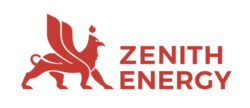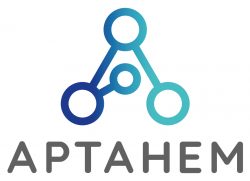Irisity AB (”Irisity” or ”the Company”) published its Q1 report for 2025 on the 13th of May 2025.
The following are key events that we have chosen to highlight in the report:
- Net sales declined -34.2% Y-Y due to project delays and timing effects
- Challenging Market Conditions Likely to Persist in Q2–Q3 2025
- Regulatory Changes Support Growth Ahead
- Collections increased 39.4% Y-Y, mitigating negative OCF
- OPEX Reductions Reflect Ongoing Streamlining
- Fully Secured Rights Issue of SEK 21.1m
Challenging Sales Trajectory – Downward Trend Expected to Continue Near Term
Reported net sales for the first quarter of fiscal year 2025 amounted to SEK 18.1m (27.6), equivalent to a decline of -34.2% Y-Y. The negative sales development can partly be attributed to the revised timing of revenue recognition for larger projects, which was also the case in Q4-24. Moreover, international project sales weighed on overall net sales for the quarter, partly reflecting delays stemming from a more complex and evolving global business climate and a weakening USD. The broader turbulence in the geopolitical and economic environment has thus resulted in project sales being delayed in Q1-25, such as large city and security infrastructure projects in the US and CALA (Caribbean and Latin America). Given the revenue deferrals in Q4-24, Analyst Group had anticipated a partial bounce back in sales, as we expected realization of the order backlog. However, the reported net sales fell short of our estimates.
Looking ahead, Irisity expects a decline in net sales over the coming two quarters as a consequence of the reassessment of the timing of revenue recognition for larger projects. However, the Company guides for a much stronger performance in Q4-25.
On the positive side, management reports a notable uptick in sales activity following recent regulatory changes concerning camera permit requirements, which came into effect in April 2025. In essence, the change means that entities previously required to apply for a permit to install CCTV cameras for surveillance in Sweden must now independently conduct a balancing of interests between the need for surveillance and the individual’s right not to be monitored — a process previously handled by IMY. This development is expected to streamline the deployment process for surveillance systems and is likely to act as a catalyst for growth within Irisity’s municipal-focused Security as a Service segment.
Invoicing and collections
Invoicing amounted to SEK 16.6m (16.3) in Q1-25, representing a slight Y-Y increase of approx. 1.4%, where the limited growth is mainly attributable to several projects being postponed to Q2-25. Collections, on the other hand, showed strong momentum, increasing by 39.4% Y-Y to SEK 26.5m (19.0) during the quarter.
Looking ahead, Irisity expects to finalize two major projects and collect the associated receivables in Q2-25, delayed from Q1-25, a development of particular importance given the Company’s current financial position. Analyst Group has previously emphasized that improvements in collections are a key KPI to monitor, as they contribute to shortening the quote-to-cash cycle and strengthening cash flow. In that context, the solid increase in collections during Q1-25 stands out as a clear positive in the quarterly report.
Flat Sequential MRR Development Q-Q
The MRR amounted to SEK 4.1m during Q1-25, reflecting flat development Q-Q and a decrease Y-Y, compared to SEK 4.4m in Q1-24. The outcome in MRR is a direct result of a postponed renewal of a U.S. government agency’s Software Upgrade Plan (SUP), which Irisity expects to be realized in Q2-25.
With regulatory tailwinds driving positive momentum in the Security as a Service segment, combined with strong expected performance from the newly launched IRIS+ Professional software and large projects entering production throughout 2025, Analyst Group believes the Company has favorable conditions to improve MRR going forward. This is particularly important given the shorter cash conversion cycle associated with SaaS revenues, which contributes to a reduction in overall DSO.
Cost Base
Examining OPEX in more detail, personnel costs amounted to SEK 23.6m (28.2) in Q1-25, representing a decrease of 16.4% Y-Y and 5.8% Q-Q, compared to approximately SEK 25.0m in Q4-24. However, when adjusting for personnel from Ultinous, personnel costs decreased by 24% Y-Y, indicating that the Company’s streamlining initiatives are yielding results.
At the end of Q1-25, the Company had 68 (81) full-time equivalent employees and 20 (11) consultants, resulting in a total workforce of 88 (92). While the reduction in total headcount (including consultants) is not as significant, the increased share of consultants provides a more flexible cost base, which can be downsized more efficiently compared to permanent staff.
Other external costs increased by 13% Y-Y, totaling SEK 11.7m (10.4) in Q1-25. Total OPEX (excluding COGS and D&A) amounted to SEK 37.2m (40.5), representing an improvement of 8% Y-Y. It is important to note that Ultinous personnel are included in the Q1-25 figures, meaning the underlying reduction in the cost base is in fact more substantial. Irisity has emphasized that cost-cutting measures will continue to take effect in the coming quarters. In summary, the EBITDA result amounted to SEK -18.8m (-3.3), and when adjusting for work performed for own account and other operating income and costs, EBITDA totaled SEK -23.1m (-15.8).
Fully Secured Rights Issue
Irisity is currently conducting a fully secured rights issue of approximately SEK 21.1m before issue costs and any set-off, at a subscription price of SEK 0.40 per share. The subscription period runs from May 16 to May 30, 2025. The rights issue is intended to strengthen Irisity’s financial position by supporting efficiency improvements, product development, and growth initiatives in key markets. It also addresses temporary liquidity pressures resulting from delayed customer payments. To bridge short-term working capital needs, Irisity has secured a credit facility, which will be repaid through set-off against newly issued shares. Upon full subscription, the Company expects to receive gross proceeds of approximately SEK 21.1m. After estimated issue costs of around SEK 1.0m, the net proceeds will primarily be used to repay the credit facility, up to SEK 15m, with the remaining minimum of SEK 5m allocated to general working capital. The rights issue is fully secured by approximately 52.5% in subscription commitments and 47.5% in guarantee undertakings, neither of which incur any cost for Irisity.
Increase in Collections Somewhat Mitigates the Negative OCF
During Q1-25, Irisity reported cash flow from operating activities (OCF) of approximately SEK -13.6m (-12.7), corresponding to an average OCF of approx. SEK -4.5m per month. Despite the sharp decline in sales during the quarter, reduced OPEX and increased collections had a mitigating effect on OCF.
Taking into account investments of approx. SEK 2.3m during Q1-25, negative free cash flow amounted to SEK -15.8m (-21.5). We anticipate that the lower investment level stems both from the strategic reorganization aimed at enhancing innovation efficiency within the R&D function, as well as from advancements in generative AI, which have significantly accelerated Irisity’s R&D process.

The working capital cycle improved markedly in Q1-25, reaching its lowest level in the past three years, primarily driven by a reduction in receivable days. The shortened cycle reflects improved cash conversion, which is particularly positive in light of the Company’s ongoing efforts to optimize liquidity and reduce net working capital tied up in operations.
Concluding Remarks About the Report
In conclusion, Irisity’s Q1-25 performance reflected continued topline headwinds, a trend expected to persist over the coming quarters due to macroeconomic uncertainty and a weaker USD, which have contributed to delayed project deliveries.
Amid these challenges, the 39.4% Y-Y increase in collections helped partially offset pressure on operating cash flow and contributed to a more efficient working capital cycle. Additionally, the reduction in OPEX indicates effects from cost-saving initiatives, though Analyst Group argues that additional reductions may be necessary given the persistently challenging market conditions.
While recent regulatory changes are estimated to support future growth in the Security as a Service segment, the near-term impact remains uncertain. Against this backdrop, the ongoing rights issue is a critical measure to address liquidity constraints. Going forward, improved execution, cost control, and collection discipline will be key to navigating the current environment.



